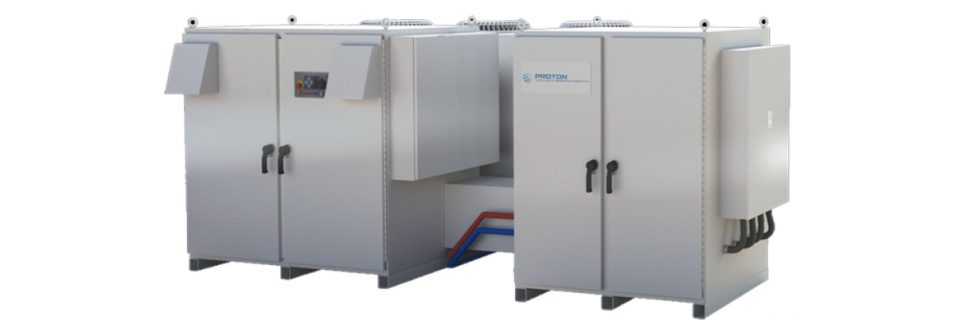About Proton OnSite
Proton OnSite is a global leader in hydrogen energy and innovative gas solutions. Since 1996, we have been developing and applying hydrogen technology in creative and practical ways that best meets the diverse requirements of our customers. Our advanced proton exchange membrane (PEM) electrolysis systems coupled with our uncompromising attention to excellence and quality enables us to deliver, install and support gas generation units on every continent. Proton OnSite manufactures hydrogen, nitrogen, and zero air generators that you can rely on. Our on-site gas generators provide a safe, reliable, and cost effective way for our customers to get the gas they need, when and where they need it. Our commercial equipment is operating on every continent, from the middle of the desert and the depths of the sea, to the most prestigious laboratories in the world. No other company has as large of a commercial fleet, or as long of a recorded history with reliability as Proton OnSite. We are exclusively focused on customer solutions, and have the experience and products to assure success.
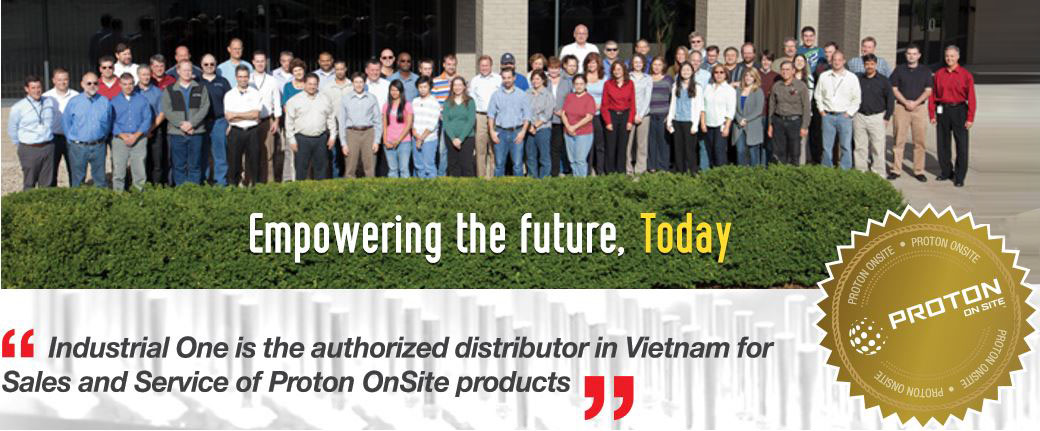
About Proton OnSite
Proton OnSite is a global leader in hydrogen energy and innovative gas solutions. Since 1996, we have been developing and applying hydrogen technology in creative and practical ways that best meets the diverse requirements of our customers. Our advanced proton exchange membrane (PEM) electrolysis systems coupled with our uncompromising attention to excellence and quality enables us to deliver, install and support gas generation units on every continent. Proton OnSite manufactures hydrogen, nitrogen, and zero air generators that you can rely on. Our on-site gas generators provide a safe, reliable, and cost effective way for our customers to get the gas they need, when and where they need it. Our commercial equipment is operating on every continent, from the middle of the desert and the depths of the sea, to the most prestigious laboratories in the world. No other company has as large of a commercial fleet, or as long of a recorded history with reliability as Proton OnSite. We are exclusively focused on customer solutions, and have the experience and products to assure success.
About Nel
Nel is a global, dedicated hydrogen company, delivering optimal solutions to produce, store and distribute hydrogen from renewable energy. We serve industries, energy and gas companies with leading hydrogen technology. Since its foundation in 1927, Nel has a proud history of development and continual improvement of hydrogen plants. Our hydrogen solutions cover the entire value chain from hydrogen production technologies to manufacturing of hydrogen fueling stations, providing all fuel cell electric vehicles with the same fast fueling and long range as conventional vehicles today.
Technical Excellence
Our PEM system technical advantages
 Differential pressure design (<1bar for O2, up to 30barg for H2) -> No risk of Oxygen contamination
Differential pressure design (<1bar for O2, up to 30barg for H2) -> No risk of Oxygen contamination- Negligible H2 quantity in the system
- No harmful chemicals used (No KOH)
- No gas separators communication -> No gas mixture risk
- No need for UPS for safe shutdown
- Almost no moving parts (no compressor)
- Plug in system including power and process equipment
- Extremely easy maintenance
- Extremely reliable & Safe (NASA, Nuclear Submarine)
Advantages of PEM On-site H2 Supply
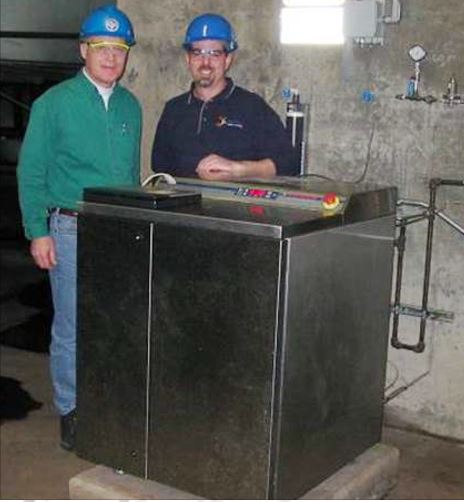 Improved process result: purity H2 (99.9998%)
Improved process result: purity H2 (99.9998%)- Enhanced gas supply reliability: eliminates runouts
- No personnel required for 24*7 hydrogen supply
- Production on demand when required (0 to 100% turndown)
- Identified impurities (Only H20 and N2)
- Safer: almost no H2 and O2 inventory onsite
- No high pressure storage onsite
- Small footprint, more space-efficient
- Stable and reduced cost
Customer Service Excellence

- Direct remote support from the US
- Network of partners
- China
- SE Asia
- Europe
- India
- Middle East
- USA
- 24/7 Technical support
- Swift availability of spares
- Service contracts
- Professional Advice
- Selection of Adapted Solution
- Detailed documentation package
- Support for site requirements
- Follow up of order
- Onsite Installation & Startup
- Factory & Field Training
Electrolysis Technology

Core Technology
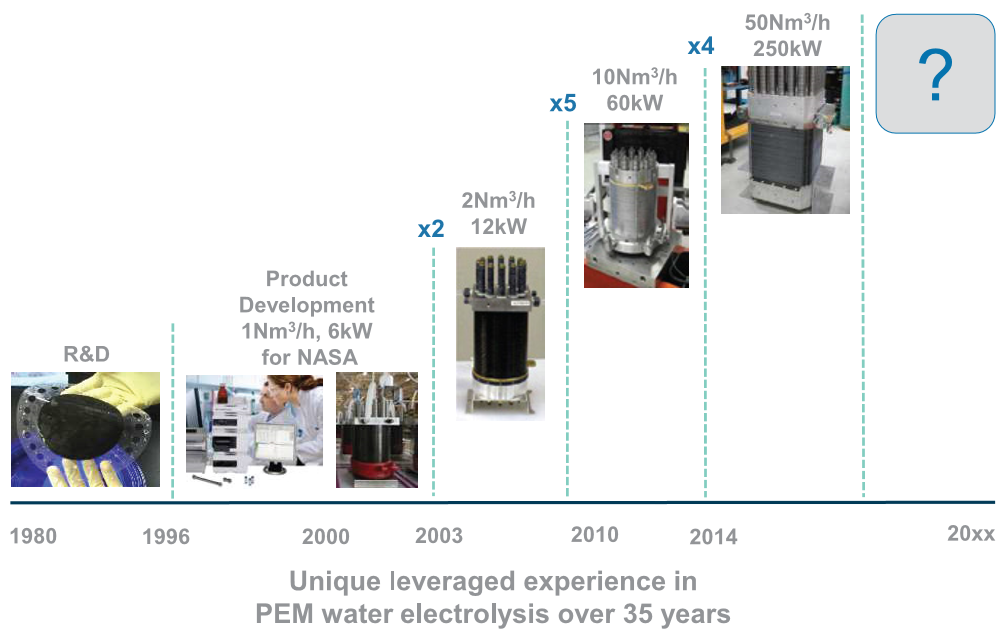
MARKETS

Our Applications
Chemical VapourDeposition (CVD)*
![]() Chemical process used to produce high quality, high-performance, solid materials. The process is often used in the semiconductor industry to produce thin films. In typical CVD, the wafer (substrate) is exposed to one or more volatile precursors, which react and/or decompose on the substrate surface to produce the desired deposit. Frequently, volatile byproducts are also produced, which are removed by gas flow through the reaction chamber.
Chemical process used to produce high quality, high-performance, solid materials. The process is often used in the semiconductor industry to produce thin films. In typical CVD, the wafer (substrate) is exposed to one or more volatile precursors, which react and/or decompose on the substrate surface to produce the desired deposit. Frequently, volatile byproducts are also produced, which are removed by gas flow through the reaction chamber.
Applications: Microfabrication processes widely use CVD to deposit materials in various forms, including: monocrystalline, polycrystalline, amorphous, and epitaxial. These materials include: silicon (SiO2, germanium, carbide, nitride, oxynitride), carbon (fiber, nanofibers, nanotubes, diamond and graphene), LED’s (Light Emitting Diodes) fluorocarbons, filaments, tungsten, titanium nitride and various high-k dielectrics.
H2 use:Carrier gas to buildup the different crystal layers.
Extreme Ultraviolet (EUV)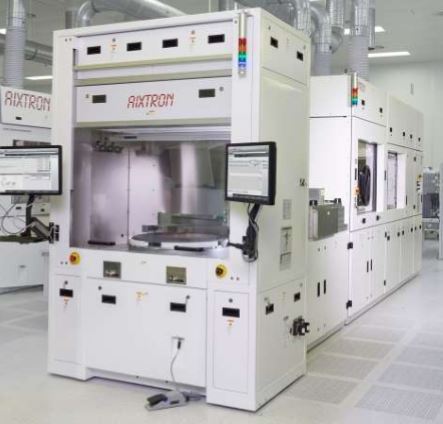
Chip makers need to pack transistors more tightly with every new generation of chips, shrinking the size of transistors. Lithography machines must therefore print finer features. Since lithography is an optical technology, one of the things that limits the resolution of the equipment is the wavelength of the light that is used. Shortening the wavelength of the light means higher resolution and smaller features (going from 365 nanometers to 13.5 nm with EUV).
Applications: Chips manufacturing.
H2 use:maintain a reducing atmosphere in the source to mitigate contamination effect on mirrors.
Float Glass Furnace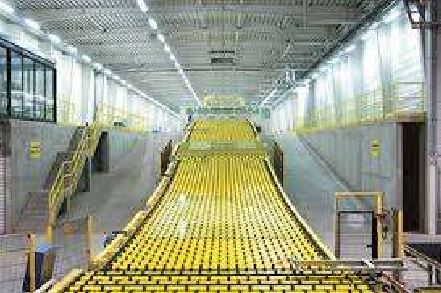
Inerting the tin bath during float glass manufacturing with nitrogen/hydrogen blends can help prevent the formation of glass defects and protect the chambers/equipment in which the glass is formed.
H2 use: protective atmosphere in the furnace.
Flame Polishing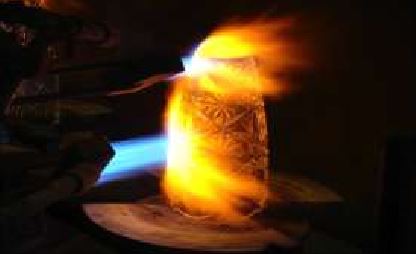
In order to give the glass articles a faultless appearance after the forming, their surface is treated with an oxyhydrogen flame.
H2 use: special flame property for polishing
Annealing –Heat Treating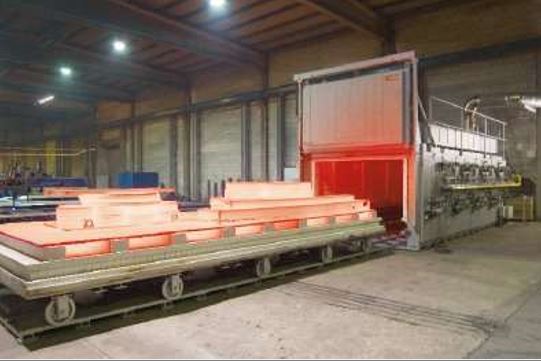
Carbon Steel, Stainless Steel Alloys, Magnetic Steel Alloys components are following that process to relieve stress, alter microstructure and/or improve surface appearance. Pure H2 or a mixture of N2/H2 create a non-oxidizing or reducing atmosphere in the furnace. Pure H2 offers superior thermal or heat transfer properties improving productivity by shortening heating and cooling time and will be used for batch applications. Blend of N2/H2 will be for continuous furnaces.
Applications: Coils, Steel Wires, Strips,…
H2 use: protective atmosphere in the furnace.
Thermal Spraying
Thermal spraying techniques are coating processes in which melted (or heated) materials are sprayed onto a surface. The "feedstock" (coating precursor) is heated by electrical (plasma or arc) or chemical means (combustion flame).
H2 use: generates high heat, low oxidation and high particle velocity.
Brazing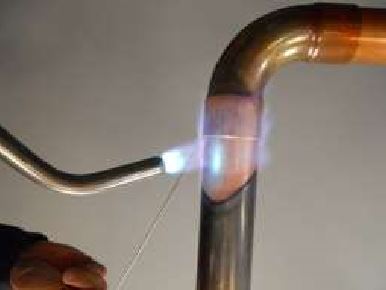
Used to join ceramic, steel or oxygen-free copper with an alloy (usually copper, nickel and precious metal). It uses the reducing properties of H2 to improve the flow characteristics of the braze alloy. The H2 atmosphere will reduce surface oxidation on the parent material, enabling the braze alloy to flow more effectively to create a high integrity braze joint.
H2 use: cleaning agent to remove oxides and leave material very bright and shiny
Sintering
Thermal process by which adjacent metal particles are chemically bonded to enhance the final properties of the powder metal compact (MIM: metal injection molding). Small metal parts like automotive parts for example use this process. During the sintering stage, which is a very critical step, H2/N2 is used to sweep lubricants that were used to help in the ejection of the compacts from the molding press.
It also creates a protecting atmosphere in the furnace to protect sintered parts from oxidation and decarburization. The finished parts will then look brighter and cleaner. Oxidation is thus virtually eliminated and the size and hardness of the components can be reproducible time after time thanks to a constant flow of N2/H2.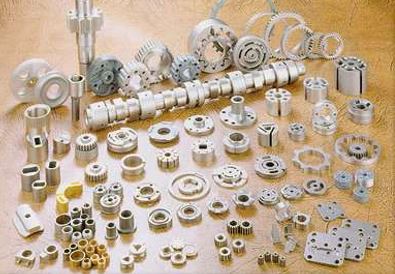
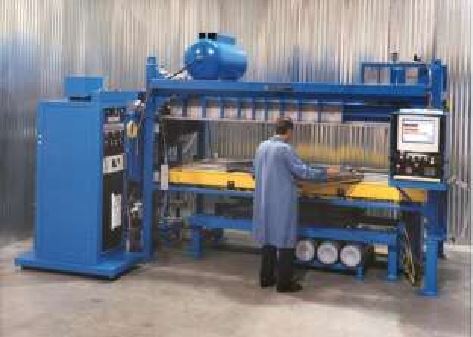 Leak testing is an essential part of quality assurance testing for a wide range of industries. It will ensure that the product meets a carefully establishedspecificationformaximum allowable leakage.
Leak testing is an essential part of quality assurance testing for a wide range of industries. It will ensure that the product meets a carefully establishedspecificationformaximum allowable leakage.
Leak testing can ensure that flammable, toxic or corrosive substances remain within an object, or that outside elements, such as water, can't get inside the product. It also ensures that a liquid or gas that is essential to the function of a system, such as brakes, air conditioners or hydraulic valves, is containedwithin thatsystem.
Looking back to the 1980s, water-bath methods (Hydrostatic Test) was used to identify leaks from bubbles generated in thebath.Today, mostof leaktestingis performedin either:
• Avacuum (forbigparts,but very expensive equipmentandprocess) • An accumulation chamber using helium as tracer gas. The helium is selected because it penetrates small leaks readily, is inert and will not react with the test piece and also has a natural low quantity in air making detection less complicated.Drawback is thehigh costof Helium.
• An accumulation chamber using hydrogen as tracer gas.. The object is filled with a mixture of 5% hydrogen/ 95% nitrogen (below 5.7% hydrogen is non-flammable (ISO-10156). This is called typically a sniffing test. Hydrogen is cheaperthanhelium, noneedforavacuum, the instrumentcouldbe cheaperbut is not as sensitive as a helium.
Applications: Automotive, Refirgeration, Air-Conditioning (radiators, engine oil coolers, EGR coolers and HVAC componentssuchas evaporatorsandcondensers).
Chemical process in which H2 gas is bubbled through a liquid oil in the presence of a catalyst (platinum or nickel), forcing unsaturated fatty acids to accept additional hydrogen atoms and become partially (creating trans fat) or fully saturated.
Edible Oils
Hydrogenated oils are used to replace other hard fats (butter, lard or coconut oil) in processed foods. In addition to improving shelf life, they also mimic the taste and mouth feel of the other hard fats. Fractioning as slowly replaced hydrogenation for some oils (palm oil) but cannot be applied to all oils.
Applications: Partially Hydrog.: Margarine, Biscuits, Cookies, Pastries, Icing, Fried food Fully Hydrog.: Ice cream coating, Coffee Creamer, Whipped Topping, Candy
H2 use: harden oil (solid or semi-solid).
Petrochemical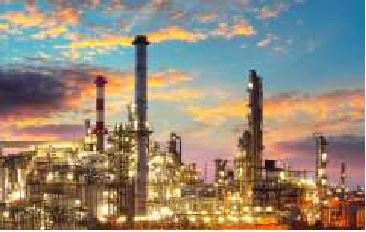
The hydrogenation process is used to create more stable hydrocarbon fuels. Many of the compounds found in crude oil are of little use since they contain multiple double bonds; they must be first converted to saturated compounds before used as commodities such as gasoline.
In petrochemical processes, hydrogenation is used to convert alkenes and aromatics into saturated alkanes (paraffins) and cycloalkanes (naphthenes), which are less toxic and less reactive. For example, mineral turpentine is usually hydrogenated. Hydrocracking of heavy residues into diesel is another application.
Pharmaceutical
Used for Vitamins and Fine Chemicals
Cosmetics (Oleochemistry)
Hydrogenated Vegetable Oil are used in the formulation of bath products, cleansing products, eye makeup, fragrances, foot powders, facial makeup, personal cleanliness products, suntan products, and other skin products. Hydrogenation allows an oily liquid to remain in a solid state at room temperature.
Hydrogenated Vegetable Oil slows the loss of water from the skin by forming a barrier on the skin’s surface. It can also be used to increase the thickness of the lipid (oil) portion of cosmetics and personal care products
Power Plants

Thanks to its low density (1/14 of air) and higher heat transfer potential (7 x air), hydrogen is often used to cool down the electrical generator in power plants.
Thanks to this, windage losses and frictions are reduced, increasing the efficiency of the power plant. Electrical, mechanical and corrosion problems are also prevented due to the fact that hydrogen creates a controlled atmosphere, preventing the presence of air and oxygen.
The construction of the electrical generator is also more economical because less components and copper can be used to reach higher efficiencies.
Our products
Wide Product Range to Meet Diverse Need
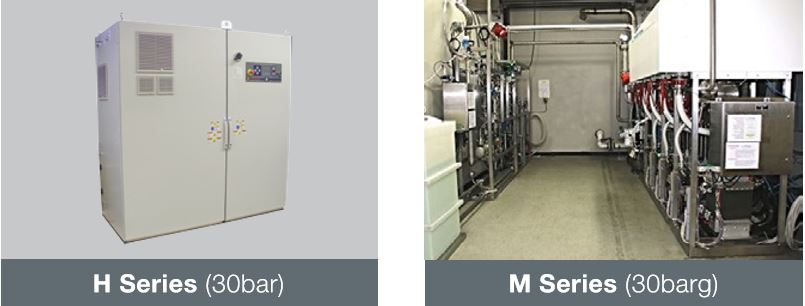
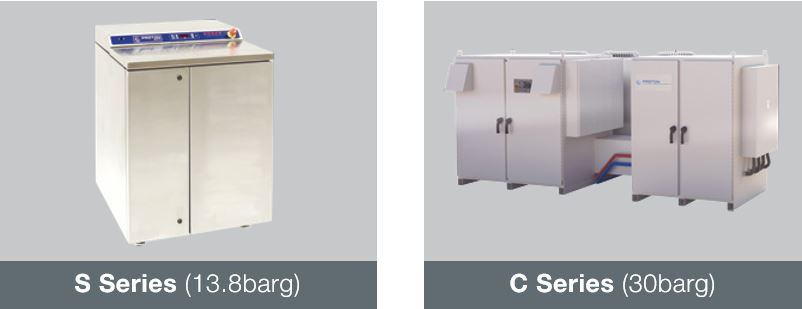
S Series
Hydrogen S Series generators utilize a Proton Exchange Membrane (PEM) cell stack and PSA technology to produce ultra-high purity hydrogen for various applications; some of which include materials processing, generator cooling and semiconductor fabrication, laboratory applications, meteorological balloon filling, etc. S Series hydrogen generators produce the equivalent of four cylinders of better-than-UHP grade hydrogen every day, which help many industries eliminate costs associated with delivery and use of hydrogen.
Features
- Auto fill water level control
- Compact size and quiet operation
- Water monitoring system including purity monitor
- Automatic production control
- System senses demand and adjusts production rate
- Purge airflow monitoring system assures safe operation
- Automatic leak detection system
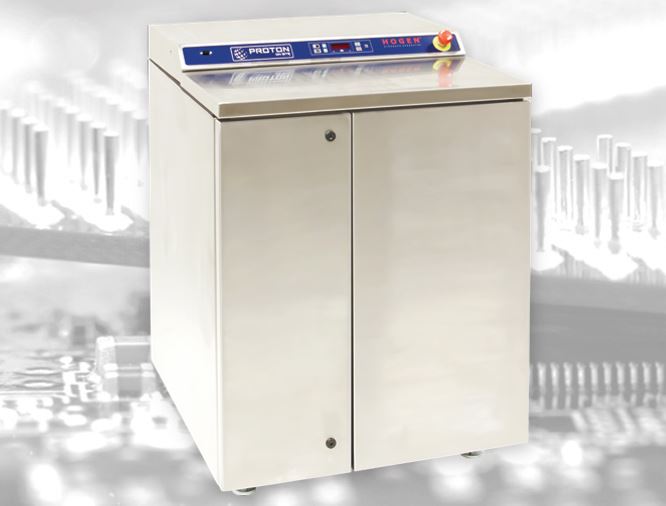
H Series
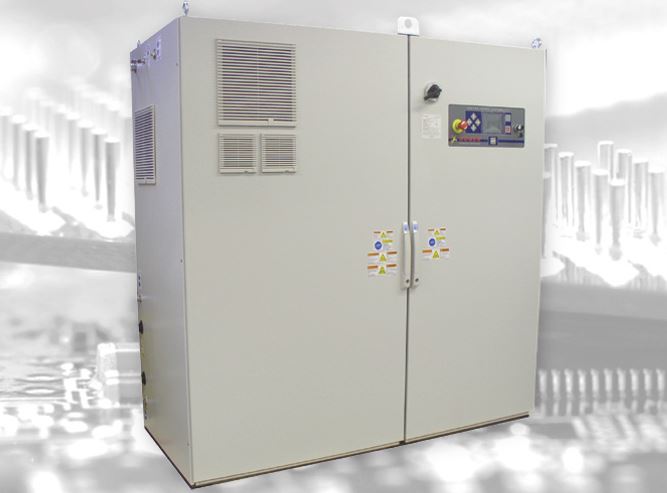
Hydrogen H Series generators utilize Proton Exchange Membrane (PEM) cell stack and PSA technology to produce ultra-high purity hydrogen for various applications; some of which include materials processing, generator cooling and semiconductor fabrication, etc. These systems benefit hydrogen users by improving supply reliability and site safety, while also reducing hydrogen storage space. The generators are modular, field-upgradeable and designed to compete with delivered hydrogen anywhere in the world. A single H6 unit will supply the equivalent of one and one-half jumbo tube trailers every month. Multiple H-systems may be combined for additional capacity at no extra integration cost.
Features
- Auto fill water level control
- Water monitoring system including purity monitor
- Automatic production control
- System senses demand and adjusts production rate
- Purge airflow monitoring system assures safe operation
- Automatic leak detection system
C Series
Hydrogen C Series generators utilize Proton Exchange Membrane (PEM) cell stack and PSA technology to produce ultra-high purity hydrogen for various applications; some of which include materials processing, semiconductor fabrication, hydrogenation, energy storage, etc. These generators achieve extreme purity and composition certainty with minimal maintenance. This series benefits hydrogen users by improving supply reliability and site safety, while also reducing hydrogen storage space.
Features
- Auto fill water level control
- Water monitoring system including purity monitor
- Automatic production control
- On board DI water system
- Factory Matched Cooler / Chiller
- Dew Point Meter
- Outdoor Operation Package
- Dedicated Datalogging computer
- Automatic H2 leak detection syste
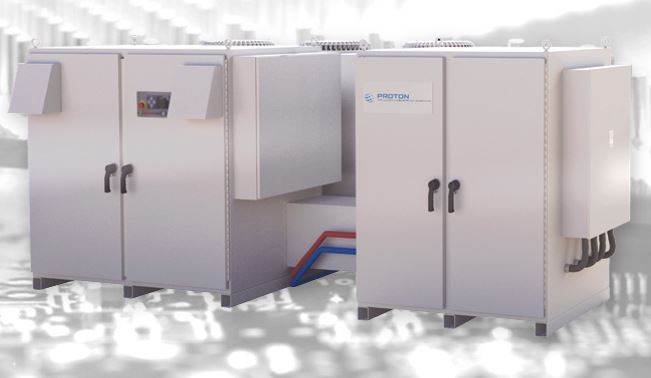
M Series
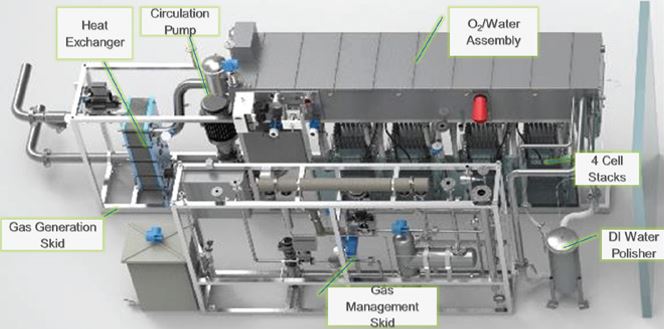
Standard Features
- Proven PEM Water Electrolysis
- 99.9% purity (99,9995% with dryer)
- -65oC dew point
- H2: Up to 30barg output (435 psig)
- O2: Atmospheric Pressure
- Fully Integrated, Automated and Site-Ready
- Produces 100, 200, 300 or 400 Nm3/hr
Standard Features
- See next page
- 5 – 20kV, 3ph, 50 or 60Hz
- Water Cooled
- Codes: CE registered (PED, ATEX, Mach. Dir.)
High Capacity Hydrogen System M Series PEM Electrolysers
Energy Storage High Capacity Hydrogen System M Series PEM Electrolysers
Stable Flow
Hydrogen Generators
ONSITE HYDROGEN GENERATORS FOR POWER PLANTS Proton OnSite’s HOGEN Hydrogen Generators utilize our unique proton exchange membrane (PEM) electrolysis system and electricity to separate water into pure hydrogen and oxygen. Each HOGEN generator produces ultra-high purity (99.999+%) hydrogen gas at output pressures up to 435 psi (30 bar) and at a dew point of -85°F / -65°C.
The compact HOGEN Hydrogen Generator can be placed on the generator deck or any other indoor, non-classified plant area. It’s unique design allows the HOGEN hydrogen generator to contain virtually no stored hydrogen, even when generating hydrogen at 1146 scf / hr (30 Nm3 hr) - meeting the daily hydrogen requirements of power plants, no matter how large (MW).
HOGEN hydrogen generation systems provide reliable, safe, low-cost hydrogen for generator cooling, giving power plant customers an attractive return on investment while improving site security, safety, and personnel
Hydrogen control
HYDROGEN PURITY AND RE-GAS MONITORING CAPABILITY WITH A RETURN ON INVESTMENT
Proton OnSite’s StableFlow Hydrogen Control System is a breakthrough product enabling the power plant to monitor and actively control generator casing hydrogen pressure, purity and dew point. Integrated hydrogen and carbon dioxide purity monitoring capability allows plants to upgrade obsolete OEM hydrogen monitoring equipment with the latest industry-proven monitoring technology, coupled with generator efficiency improvement.
StableFlow Hydrogen Control Systems integrate into your current hydrogen sampling infrastructure to continuously monitor hydrogen pressure, purity and dew point while actively optimizing these parameters to achieve:
• Optimized fuel efficiency
• Maximized generator capacity StableFlow Hydrogen Control System - it’s not just hydrogen monitoring, but monitoring with a return on investment.






